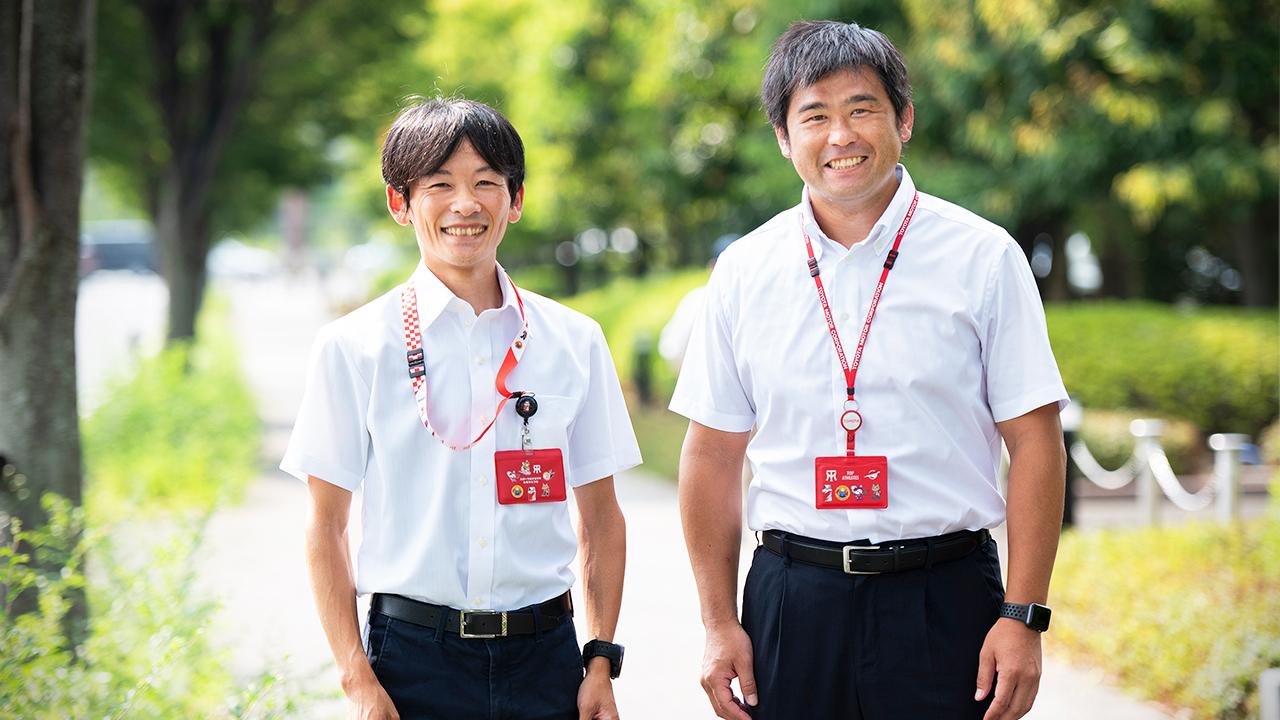
In the department that supports the activities of Toyota athletes are many people who are former Toyota athletes themselves. So what are their unique methods for providing support and how do they utilize sports culture?

What is the Toyota Sports & Corporate Citizenship Division?
There are a total of 33 clubs and teams at Toyota, including seven representative sports clubs, and 26 non-competitive sports clubs. The organization responsible for providing behind-the-scenes support to the amazing achievements of all these athletes is the Toyota Sports & Corporate Citizenship Division. In this article, Tetsuya Watanabe and Yoshinori Oda who work in the division explain the ways in which Toyota supports athletes.

Watanabe is a former rugby player who was also selected for the Japan national team, and Oda has previously taken part in the athletics world championships representing Japan as a marathon runner. Having competed at the top level themselves, these two are now using their own experience to support the current generation of athletes. What they have to say is very interesting from the perspective of how athletes approach their second careers.
First, Watanabe explained a little about his work in the division as Sports Event Group Manager.
At Toyota we have a total of seven representative clubs: rugby, baseball, long-distance running, women’s basketball, women’s softball, short track speed skating, and beach volleyball. I am responsible for expanding the fan base and enhancing fans’ satisfaction when they come to support our teams, as well as planning supporter tours and livening up event venues. I am also responsible for supporting the 26 non-competitive clubs.
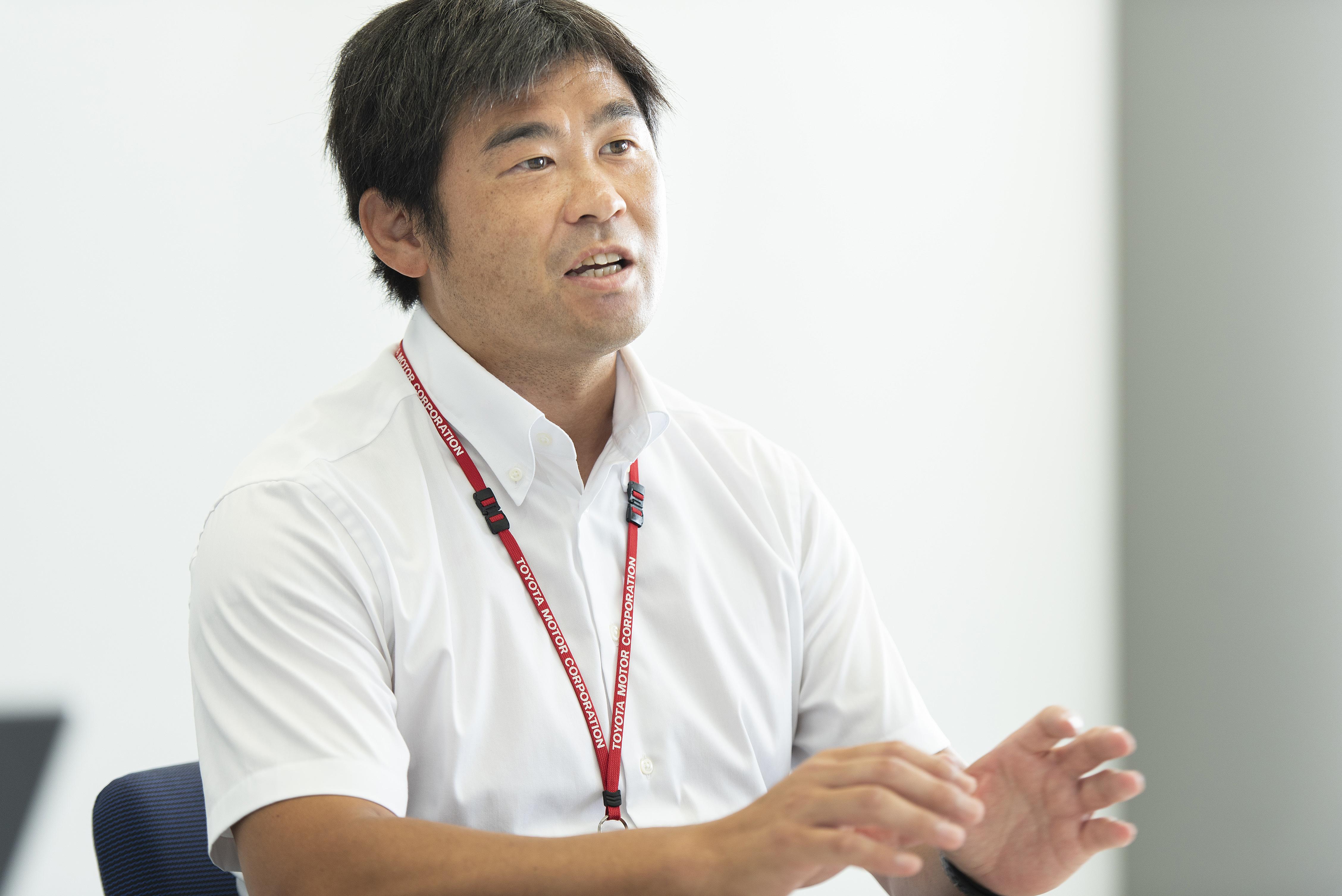
Oda transferred to the division in February 2021 and his job title is Assistant Manager at Corporate Citizenship Group.
My group is responsible for supporting the activities of individual athletes, including Hiroki Muto, who won bronze in the men’s team archery event at the Olympic Games Tokyo 2020, and also Paralympic athletes. We are also involved in creating buzz and excitement about the Olympic and Paralympic Games, and engaging in community contribution activities.
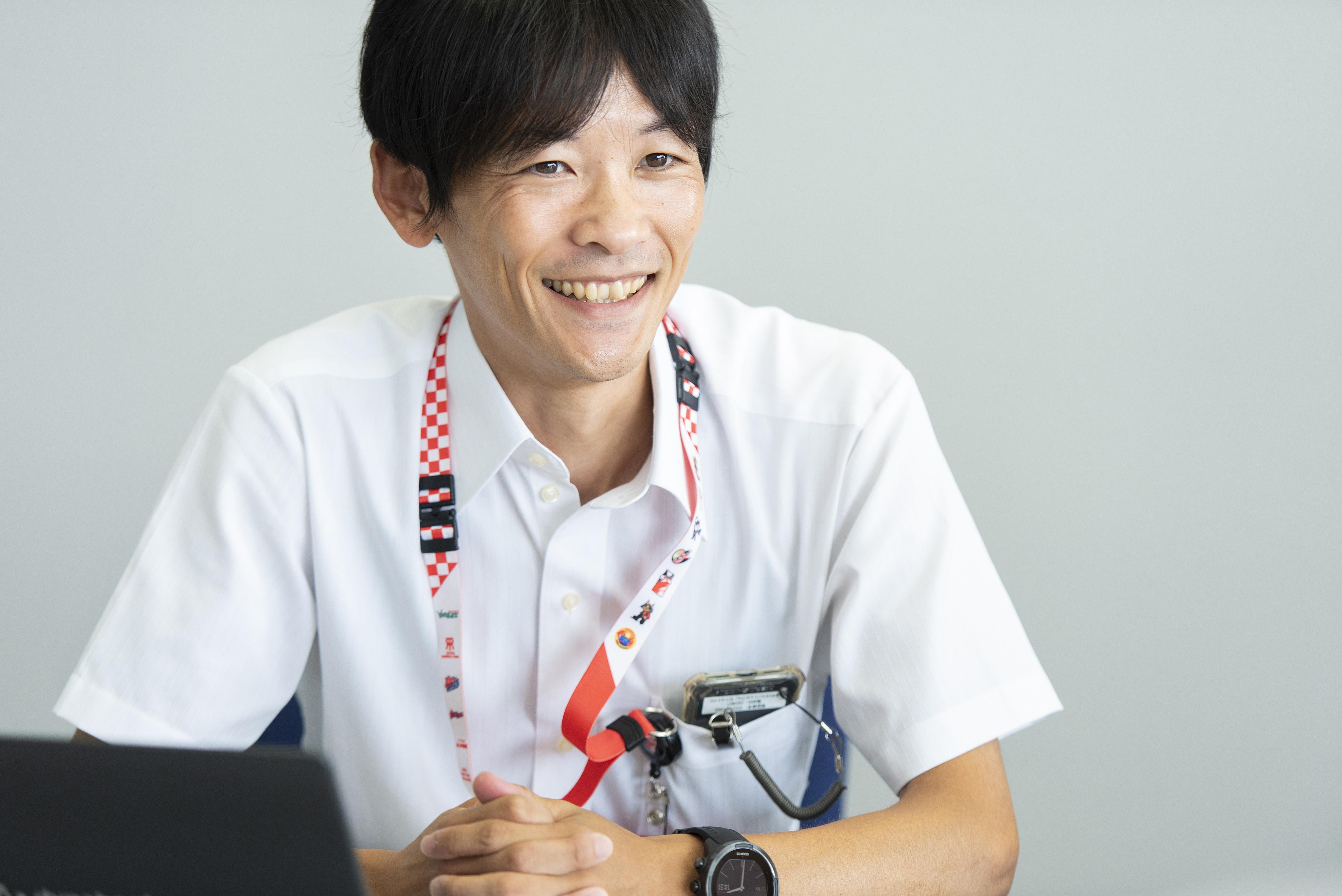
Why did former top athletes choose to join Toyota?
So what was in the mind of these two, who both enjoyed spectacular success as top athletes during their sporting careers, when they joined Toyota, and what are their thoughts today? They first shared the background that led to them joining the company. Watanabe, who was selected as a Japan national rugby team member from university, says that he received offers from various companies.
I consulted with my parents and my coach from high school days while visiting various potential companies. I concluded that at that time that a rugby player could expect to play competitively until about the age of 30 and that I would want to choose a company where I could concentrate on my work after that. When I visited Toyota, they introduced me to former players of the rugby club, who are working in various divisions at Toyota. Also, at training camps for Japan national team members, players from Toyota told me that after retiring from competitive sports I could find a stable job there, which was why I decided on Toyota.
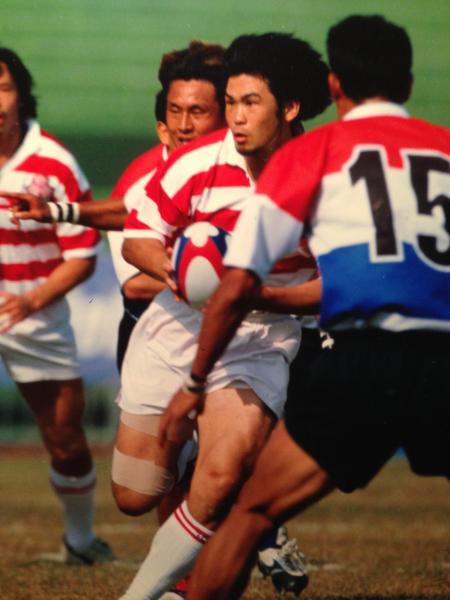
Oda, who has always been a long-distance runner, from the All Japan High School Ekiden Championships to the Hakone Ekiden at university, also says that he received offers from various company teams.
Because my working life is going to be much longer than my career in competitive sports, similarly to Mr. Watanabe I chose Toyota based on the decision that it provides an environment where I can devote myself to my work.
Senior workplace colleagues and friends are the reason I am here today
During his rugby-playing years Watanabe worked at the Cost Management Group, in the Administration Division of Motomachi Plant, and Oda worked at the Engineering Service Dept., in the Final Assembly Division of Tahara Plant (moving to the Cost Management Group of the Administration Division after retiring from competitive sports). Every day they would start training from around 3 or 4 p.m. However, both men admit that it was difficult to balance competitive sports with work duties. First, Watanabe recalls his sporting years in this way.
First and foremost, work was very difficult. I remember being severely criticized in a cost-related meeting at the Manufacturing departments for reading out in a monotone a document I had spent a great deal of time preparing, only to be told that it was so disordered as to be unintelligible (smiles wryly). However, my senior work colleagues helped me out and it was a really useful experience to have stuck to my guns without escaping from the hard situation. A good memory is that some of the strictest people in the workplace were the ones shouting loudest from the stands to support me.
Oda also notes that during his time representing Japan as a long-distance runner there were times when he worried about whether he could run and also do his job properly.
During my running days, I worked from 9am to 2pm, and I would often be away at training camp or events. It was therefore difficult to entrust me with any kind of proper work and so after retiring from running I initially felt work to be a challenge. However, I would be honest and say, ‘I can’t do this, can you help me?’ and many people in my group and in the workplace who had supported me as a runner would kindly provide support, saying, ‘We’re only doing this because it’s you.’ I sometimes think that I should have studied more in the workplace while I was still an athlete, but I am where I am today thanks to the workplace atmosphere and the people there who have helped me.

Generous support for athletes that went unnoticed during active years playing sports
Watanabe joined the company in 2002, but suffered a major injury that made him retire from competitive sports in 2006. Until 2012 he worked at the Motomachi Plant, and since 2013 he has been at the Toyota Sports & Corporate Citizenship Division. Oda joined Toyota in 2003 and continued his running career until 2014. After retiring from competitive sports he worked at the Tahara Plant, before transferring to the Toyota Sports & Corporate Citizenship Division in 2021.
Both men say that now they are in a position to provide behind-the-scenes support to athletes, they have realized just how much they didn’t notice when they were athletes themselves. Watanabe puts it this way.
When I was playing sports I really felt the presence of people supporting me in the stands, and I was also very grateful for the various kinds of support I received. However, once I was in the position of providing this support I was shocked by its scale and breadth, such as just how much it costs to go to training camp just once, or how much effort it takes to arrange for a bus to transport supporters. Also, when I reported the results of my matches I received encouragement from many people, but I realize even more clearly now than back then just how many people cared about my activities.

Unique perspective and abilities as a former athlete
Today Oda supports individual athletes, and says that his own experiences are really useful in the work he does.
I can utilize my own experiences, such as deciding whether it’s better to talk to someone before a big event, or just leave them alone. I suffered various injuries when I was running, and this helps me to understand the thoughts and feelings of athletes experiencing similar difficulties.
Watanabe also nods vigorously in agreement with this sentiment, saying:
I don’t know whether my choice of words is appropriate, but both Oda and I put our lives on the line when we were participating in competitive sports. We therefore understand that today’s athletes approach games and events with the same determination, and we want to provide perfect support and ensure that they can compete in an ideal environment. That is where our motivation comes from for our current work.

How to contribute to communities through sports
Engaged in these kinds of athlete support efforts, Watanabe and Oda are also looking to the future, involving not just the clubs and teams of Toyota, but also the role that sports plays in contributing to the community. For example, at the time of the Rugby World Cup Japan 2019, Watanabe says that he wanted to leave some kind of legacy.
At the time I was working in the Corporate Citizenship Group where Oda currently works. It had been confirmed that World Cup matches would be played at Toyota Stadium and although there is a rugby school in Toyota City, there are no rugby clubs at any of the public junior high schools in the city. We faced the problem that although rugby is popular and played through to the end of elementary school, from junior high school onwards the number of people playing rugby suddenly drops off. It was in order to create an environment where children could devote themselves to rugby on weekdays that we made careful preparations, with the result that the Toyota Sports Academy was launched as a joint industry-government-academia collaboration between Toyota Motor Corporation, Toyota City Hall, and Chukyo University.
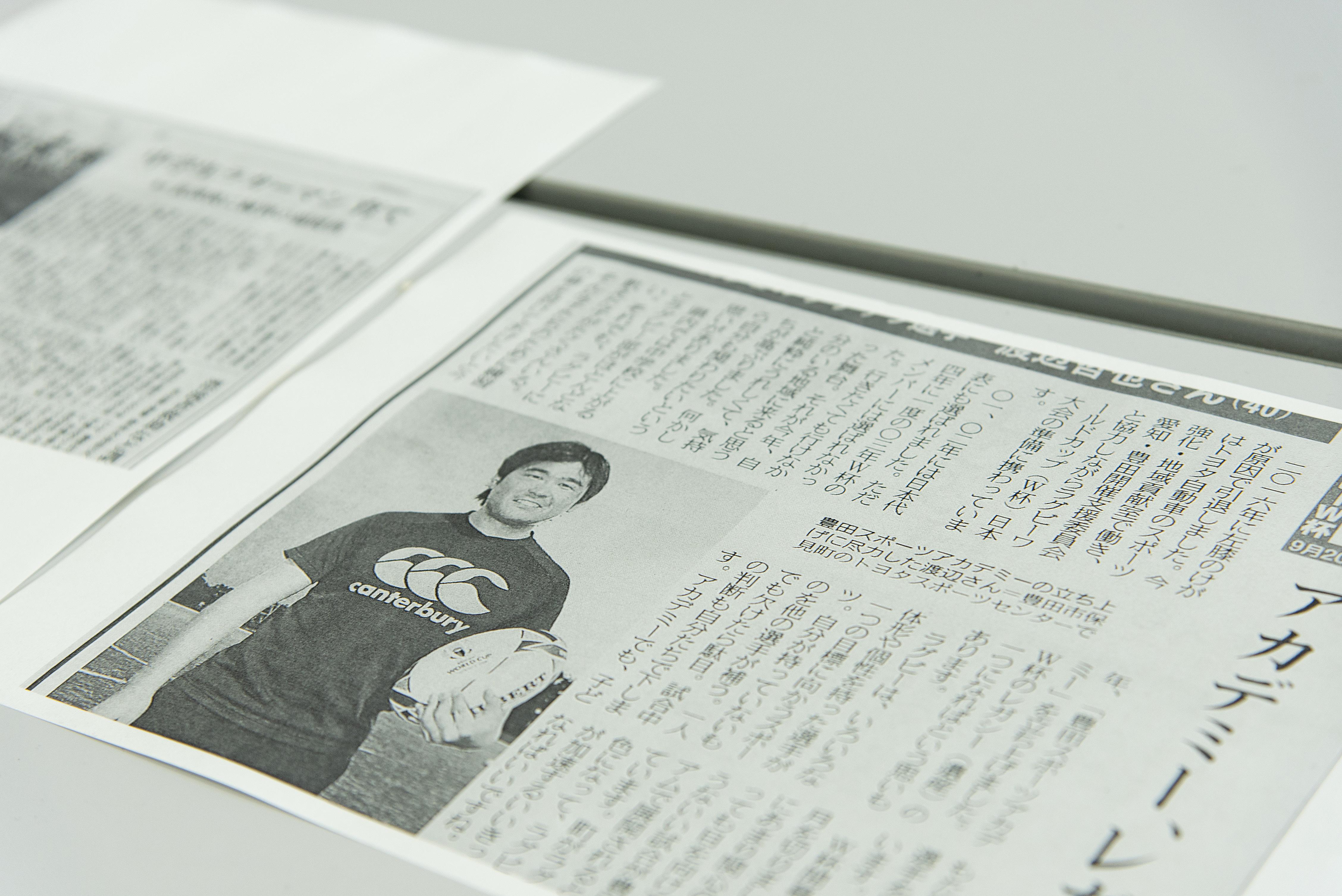
Watanabe’s efforts were carried forward by the Corporate Citizenship Group and from this year baseball has also been added to the sports covered at Toyota Sports Academy. Oda says that he wants to use his career as a former athletics athlete to make a contribution to the community.
Over several decades as a runner I was able to accumulate various experiences. It is those skills and experiences, as well as the sheer enjoyment of running, that I want to share with amateur runners and children. I have been working to bring together former athletes from Toyota’s athletics club and colleagues who run the internal company Ekiden race, and hold a homespun-style athletics event. It is in this relaxed atmosphere that former and current Toyota athletes act as the pace makers, encouraging other participants to achieve new personal bests, and I hope to further enhance and invigorate such activities.
Creating a virtuous cycle in the company and community through sports
Utilizing the experience and know-how they acquired through their activities at Toyota’s clubs and teams, these two are working to create an environment where athletes can perform in line with their own expectations. Looking beyond the company’s own clubs and teams they are also contributing to the vitalization of local communities. It is clear from hearing them talk that a virtuous cycle has been created.
Watanabe has a final comment to make about their work.
Although one of the important roles of having successful in-house teams and clubs is to provide bright and cheerful talking points and strengthen solidarity among colleagues, it is also important to go that one step further and continue to think about how we can contribute to society. For starters, by popularizing competitive sports I want to promote sports more broadly.
Hearing Watanabe’s words gives you a sense of just why an auto manufacturer like Toyota maintains and supports sporting clubs and teams. Providing support to athletes ultimately contributes to the creation of a society where people can live cheerful and healthy lives.
(Text: Takeshi Sato, Photos: Tomoyuki Obokata)

